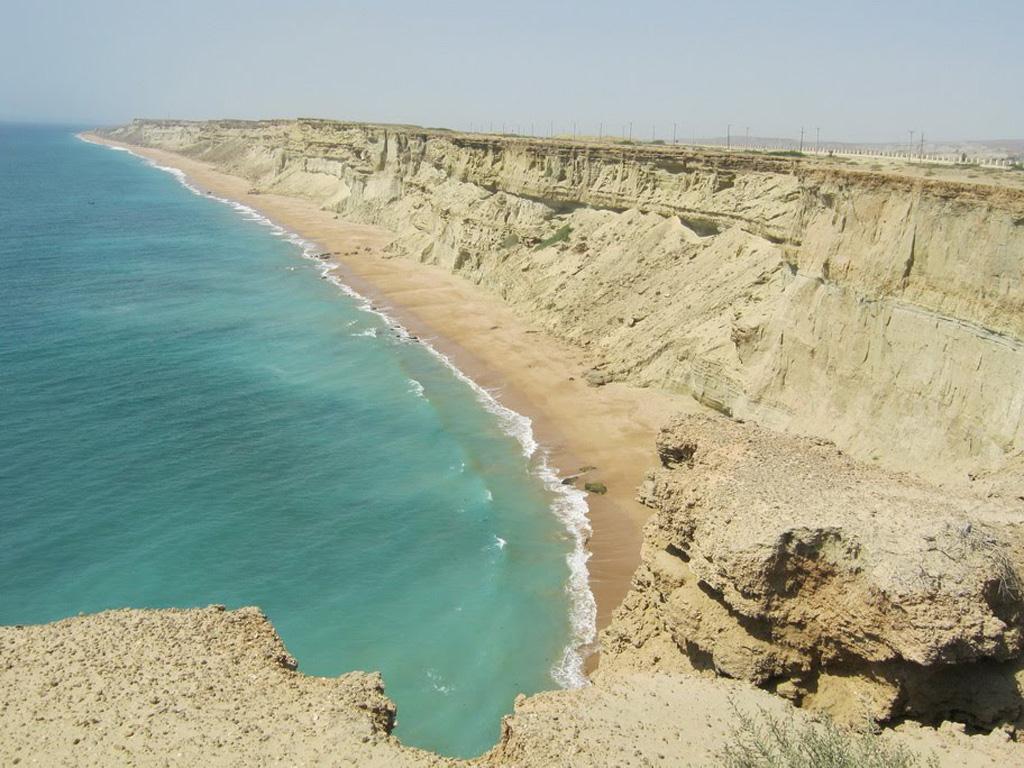The government has approved a strategic plan for the development of the southern Makran Coast, setting guidelines to achieve sustainable development of the region and benefit its indigenous people while lowering social and environmental damage, as the area boasts a wide range of investment opportunities.
"A working group led by First Vice President Es’haq Jahangiri approved the Special Plan for Development of Makran Region on December 26, 2016, after the Ministry of Roads and Urban Development spent about two years for its preparation," said Zohreh Davoudpour, director general of the ministry’s "Corporal Projects Office", told Financial Tribune in an interview.
The office handles research projects aimed at locating developing regions and studying their specifications.
The plan is focused on “the development of the underprivileged region in line with its existing opportunities and potential”, she said.
The official said the guidelines provide a list of locations whose development would entail minimum environmental and social consequences and maximum economic benefit for the residents of Makran Coast.
The move to carry out the comprehensive research project came after a “bitter experience” in Asaluyeh in southern Bushehr Province, which saw environmental harm and unrestrained migration after the development of energy facilities in the past few years.
Located on the shore of the Persian Gulf, Asaluyeh is the site of land-based facilities of the massive Pars Special Energy Economic Zone project, due to its proximity to the largest natural gas field in the world, the South Pars/North Dome Gas-Condensate field.
Despite the presence of numerous oil companies in the southern port city, its educated, indigenous inhabitants are mostly unemployed.
Asaluyeh's residents also suffer disproportionately from air pollution, which is estimated to be dozens of times more than that of Tehran.
Makran is a semi-desert coastal strip stretched along southeastern Iran to Pakistan’s Balochistan and borders the coasts of Persian Gulf and Sea of Oman. It is home to the strategic port of Chabahar.
The Iranian part of Makran Coast, bordering two southern provinces of Hormozgan and Sistan-Baluchestan, has been earmarked as a prime location for development, as its location makes it ideal for becoming a commercial hub in southern Iran.
Leader of the Islamic Revolution Ayatollah Seyyed Ali Khamenei has called the region an “undiscovered treasure”. In 2008, he said Iran focused all of its attention on the Persian Gulf and ignored “our enormous wealth in the Sea of Oman”.
This body of water, he noted, is “the backbone of the Persian Gulf and determines its fate”.
> Ripe for Investment
In January, Chabahar Free Zone hosted the International Conference on Investment Opportunities in Makran for introducing opportunities to those willing to invest.
The confab included expert panels that discussed investment opportunities in a wide range of sectors, including oil and gas, seafood and agriculture, mining, tourism, transportation, ports and urban development, petrochemicals, water and energy.
Davoudpour said industries pertaining to shipping, fisheries and tourism have been prioritized as part of the strategic plan.
The region has high potential for sea trade. It can provide Iran with access to the Indian Ocean acting as an outlet for landlocked countries in South and Central Asia. It can also be an alternative route to deliver goods to Iran bypassing the Strait of Hormuz.
Jahangiri said last year Iran needs to build new oil terminals along its southern coasts to meet its rising crude export capacity, as it aims to challenge rival producers.
“The strategic plan for the [development of] Makran Coast includes shipping crude oil outside the Persian Gulf and from the southeastern coasts,” he said.
Jahangiri’s statements were a fresh call for diversifying the country’s oil terminals that are largely concentrated in the Persian Gulf.
In contrast, Iran’s Makran Coast has barely developed into a trade and shipping hotspot, save for the port city of Jask that is slowly turning into an oil and gas terminal.
New oil loading facilities at Makran would significantly reduce shipping costs for Iranian and international vessels, sparing them a lengthy voyage through the Strait of Hormuz all the way to Iran’s main oil and gas terminals in Asaluyeh, Kharg and Mahshahr on the westernmost side of the Persian Gulf.
But, on top of it all, officials eye Makran’s tourism as the most promising sector.
Kambiz Gohari, the head of the provincial chapter of Iran’s Cultural Heritage, Handicrafts and Tourism Organization, has said drawing on the Makran's potential for marine tourism is essential to develop the local economy.
“Investing in infrastructure along the coasts will help the region realize its marine tourism potential,” he said.
To that end, the provincial ICHHTO has been working closely with Chabahar Free Zone Organization and Iran’s Ports and Maritime Organization.
Gohari said the government’s commitment toward this joint effort heralds a bright future for tourism in Makran.
Davoudpour said the new plan is designed to benefit businesses as well.
“Investors would be guided to locations that pose little risk in terms of natural disasters such as tsunami and earthquake,” she said.
The Special Plan for Development of Makran Region includes three long-term horizons by 2020, 2030 and 2040.
It estimates that development projects planned by different bodies, such as the ministries of agriculture, industries and roads, will increase the population of the region to one million by 2020, by creating new jobs and making the region more habitable.
According to Davoudpour, the region’s population is roughly 600,000 at present.
“If plans go ahead and the investment is attracted, the population can be increased to five million by 2030,” she said.
The plan assures fair distribution of businesses and population to prevent centralization.
It also aims to create “endogenous development” as opposed to “exogenous development” experienced in regions like Asaluyeh.



